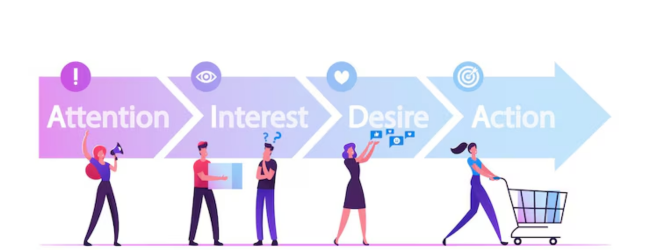Table of contents
In today’s competitive marketplace, understanding why consumers make the purchasing decisions they do is paramount. It’s not enough to simply have a great product or service; businesses need to delve into the intricate world of consumer psychology and decision-making processes. This is where models of consumer behaviour come into play. These frameworks provide valuable insights into the factors that influence consumers, helping businesses tailor their marketing strategies for maximum impact. This blog will explore what consumer behaviour models are, why they are crucial, the different types available, the typical stages involved in consumer decision-making, and key takeaways for marketers.
What is a Consumer Behaviour Model?

A consumer behaviour model is a theoretical framework that attempts to explain and predict how consumers behave in the marketplace. These models simplify the complex decision-making process by identifying key variables and their relationships. They act as a roadmap, helping marketers understand the various internal and external factors that drive consumer choices, from initial need recognition to post-purchase evaluation. By understanding these models, businesses can gain a deeper understanding of their target audience, anticipate their needs, and develop more effective marketing campaigns.
Importance of Consumer Behaviour Models
Understanding consumer behaviour is no longer a luxury; it’s a necessity for business survival and growth. Consumer behaviour models offer several critical benefits:
- Enhanced Targeting and Segmentation: By understanding the drivers of consumer behaviour, businesses can segment their market more effectively and target specific groups with tailored messaging and product offerings.
- Improved Marketing Strategies: Models provide insights into which marketing channels, messages, and promotions are most likely to resonate with consumers at different stages of their decision journey.
- Effective Product Development: Understanding consumer needs and preferences helps businesses develop products and services that truly meet market demands.
- Optimized Pricing Strategies: Consumer behaviour models can shed light on price sensitivity and the perceived value of products, enabling businesses to set optimal pricing strategies.
- Enhanced Customer Experience: By understanding the entire consumer journey, businesses can identify pain points and create a more positive and seamless customer experience.
- Increased Sales and Loyalty: Ultimately, a deep understanding of consumer behaviour leads to more effective marketing, higher sales conversions, and increased customer loyalty.
Types of Consumer Behaviour Models

Several models attempt to explain consumer behaviour, each focusing on different aspects of the decision-making process. Here are some key types:
Economic Model
The economic model is one of the earliest and simplest models. It assumes that consumers are rational beings who make purchasing decisions based on maximizing their utility (satisfaction) while minimizing their costs. Key assumptions include:
- Rationality: Consumers make logical choices based on available information.
- Perfect Information: Consumers have complete knowledge about all available options.
- Utility Maximization: Consumers aim to get the most value for their money.
While the economic model provides a basic understanding, it often falls short of explaining real-world consumer behaviour, which is often influenced by emotions, biases, and incomplete information.
Learning Model
The learning model suggests that consumer behaviour is learned through experience and repetition. It draws upon behavioural psychology principles like:
- Classical Conditioning: Associations are formed between stimuli and responses (e.g., a catchy jingle associated with a product).
- Operant Conditioning: Behaviour is influenced by rewards and punishments (e.g., positive reinforcement from a good product experience leads to repeat purchases).
- Cognitive Learning: Consumers learn through information processing, problem-solving, and understanding relationships.
This model highlights the importance of building brand awareness, providing positive product experiences, and consistent reinforcement through marketing efforts.
Psychoanalytic Model
Rooted in Sigmund Freud’s psychoanalytic theory, this model emphasizes the influence of unconscious needs, desires, and motivations on consumer behaviour. It suggests that purchasing decisions are often driven by deeper psychological factors that consumers themselves may not be fully aware of. Key concepts include:
- Id, Ego, and Superego: These represent the primal instincts, the rational self, and the moral conscience, respectively, all influencing decisions.
- Defense Mechanisms: Consumers may use defense mechanisms like denial or rationalization to justify their purchases.
- Symbolic Meaning of Products: Products can represent more than just their functional value; they can symbolize status, identity, or aspirations.
While difficult to directly apply in marketing, this model underscores the importance of understanding the emotional and symbolic aspects of consumer choices.
💡Pro Tip: If you want to start a business but have too many doubts, connect with a business expert from Boss Wallah for guidance – https://bw1.in/1116
Sociological Model
The sociological model emphasizes the impact of social and cultural factors on consumer behaviour. It highlights the influence of:
- Reference Groups: Groups that consumers identify with or aspire to belong to (e.g., family, friends, colleagues, celebrities).
- Culture and Subculture: Shared values, beliefs, and customs that shape consumer preferences.
- Social Class: Socioeconomic status influences purchasing power and consumption patterns.
- Opinion Leaders: Individuals whose opinions are highly valued and influence others’ decisions.
This model stresses the importance of social proof, community building, and understanding the cultural context in which consumers make decisions.
Engel-Kollat-Blackwell (EKB) Model
The Engel-Kollat-Blackwell (EKB) model is a comprehensive model that views consumer behaviour as a multi-stage decision process influenced by a wide range of factors. It includes stages like need recognition, information search, evaluation of alternatives, purchase, and post-purchase behaviour, with various psychological, social, and situational influences affecting each stage.
Nicosia Model
The Nicosia model focuses on the flow of communication between a firm and its potential consumers. It depicts a circular process starting with a firm’s marketing message, which influences consumer attitudes, leading to a search for more information, evaluation, purchase decision, and ultimately, feedback to the firm.
Howard-Sheth Model
The Howard-Sheth model is another comprehensive model that attempts to explain rational consumer choices within a framework of psychological, social, and marketing influences. It distinguishes between extensive problem-solving, limited problem-solving, and routinized response behaviour, depending on the consumer’s familiarity with the product category.
ALSO READ | How to Run Ads on Instagram | A Complete Guide
Stages of Consumer Behaviour Model

While specific models may vary in their detailed stages, a general framework for the consumer decision-making process typically includes the following stages:
- Need Recognition: The consumer identifies a problem or need that can be satisfied by a purchase. This can be triggered by internal stimuli (e.g., hunger) or external stimuli (e.g., advertising).
- Information Search: The consumer seeks information about potential solutions to their need. This can involve internal search (recalling past experiences) or external search (seeking information from online sources, friends, family, etc.).
- Evaluation of Alternatives: The consumer evaluates the different options available based on various criteria such as price, features, brand reputation, and perceived benefits.
- Purchase Decision: The consumer makes the actual purchase, including decisions about the product, brand, retailer, timing, and payment method.
- Post-Purchase Behaviour: After the purchase, the consumer evaluates their experience with the product or service. This stage can lead to satisfaction, dissatisfaction, and the formation of future purchase intentions and brand loyalty.
Understanding these stages allows marketers to target consumers with relevant information and strategies at each point in their journey.
Key Takeaways
- Consumer behaviour models provide valuable frameworks for understanding why consumers make the choices they do.
- Different models offer unique perspectives, focusing on economic, psychological, social, and learning influences.
- Understanding the stages of the consumer decision-making process is crucial for effective marketing.
- Applying insights from consumer behaviour models can lead to better targeting, messaging, product development, and customer experience.
- In today’s complex market, a holistic approach that considers multiple factors influencing consumer behaviour is essential.
Need Expert Guidance?
Starting a business can be challenging, but you don’t have to do it alone! At Boss Wallah, our 2,000+ business experts are ready to provide valuable insights and guidance. Whether you need help with marketing, finance, sourcing, or any other area of any business, our business experts are here to help you succeed- https://bw1.in/1116
Confused about Which Business to Start?
Want to start your own business but unsure which one to choose? Explore Boss Wallah, where you’ll find 500+ courses by successful business owners, featuring practical, step-by-step guides on starting and growing various businesses. Find your perfect business idea today – https://bw1.in/1111
Conclusion
Models of consumer behaviour are powerful tools for marketers seeking to connect with their target audience on a deeper level. By understanding the underlying drivers of consumer decisions, businesses can move beyond guesswork and develop data-driven strategies that resonate with their customers, build stronger relationships, and ultimately drive business success. Embracing these models and continuously seeking to understand the evolving landscape of consumer behaviour is key to staying ahead in today’s dynamic marketplace.
FAQs
1. What is the primary goal of consumer behaviour models?
- The primary goal is to explain and predict how consumers behave in the marketplace by identifying key influencing factors.
2. Are all consumer behaviour models equally applicable?
- No, different models focus on different aspects of consumer behaviour and may be more relevant in specific contexts. A combination of insights from various models often provides the most comprehensive understanding.
3. How can businesses use consumer behaviour models in their marketing?
- Businesses can use these models to segment their market, tailor marketing messages, develop effective product strategies, optimize pricing, and enhance the overall customer experience.
4. Is consumer behaviour predictable?
- While models aim to predict behaviour, human decision-making is complex and influenced by many factors, some of which are unpredictable. However, these models provide valuable insights and probabilities.
5. How often should businesses revisit their understanding of consumer behaviour?
- Consumer behaviour is constantly evolving due to changing trends, technologies, and cultural shifts. Businesses should continuously monitor and adapt their understanding of consumer behaviour to remain relevant and effective.


